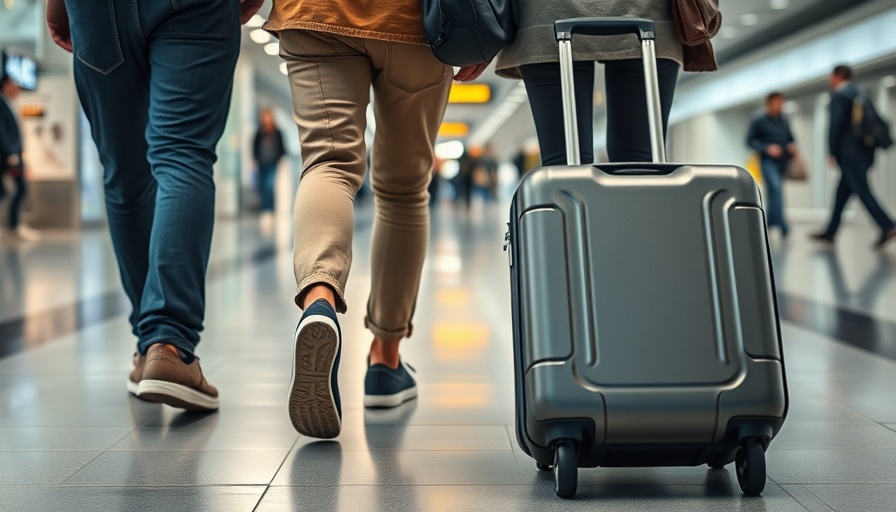
Understanding Real ID Enforcement: A New Paradigm for Travel
Starting May 7, the United States will rigorously enforce the Real ID Act, a legislative move aimed at enhancing national security, especially in airports and federal buildings. Under this new law, travelers must present identification that meets stricter requirements. This has significant implications for frequent flyers and casual travelers alike, prompting major logistics considerations when arriving at airports.
Potential Delays: The Reality Ahead
Airport authorities, including spokespersons at Austin airport, are urging passengers to arrive at least four hours early if they are not compliant with the Real ID standards. With many travelers unprepared, an influx of individuals processing new IDs could lead to longer check-in times and increased screening volumes. This could create cascading delays as passengers strain airport resources.
A Ripple Effect: Missed Flights and Impacts on Travelers
With the enforcement occurring at a time when air travel is returning to pre-pandemic levels, the risks are considerable. Missed flights could become a common occurrence, and this could cause headaches for not only the passengers involved but also for airlines, ground transportation, and local businesses that rely on tourism. Areas near airports may experience overflow traffic as travelers scramble to comply with the new regulations.
Real ID vs. Other Forms of Identification
It’s essential for travelers to understand which forms of IDs will be deemed compliant under the Real ID guidelines. While many are familiar with standard driver’s licenses, not all will qualify. Some states may offer Real ID-compliant options, and others might not. This discrepancy puts many unprepared travelers at risk of a disruptive travel experience if they fail to plan adequately.
How Other Airports Are Responding
The situation isn't isolated to Austin. Airports across the nation, such as San Francisco International and Pittsburgh International, are also preparing for compliance and associated challenges. The buzz in the industry suggests a collective anxiety among travelers, with many airport officials advising the public to familiarize themselves with the new laws to avert unnecessary delays.
Preparing for Change: Tips for Smooth Travel
1. **Verify Your ID**: Before heading to the airport, check if your ID meets Real ID specifications.
2. **Arrive Early**: If you’re unsure whether your ID is compliant, give yourself extra time at the airport to avoid rushing.
3. **Stay Informed**: Follow local news, such as the Austin Business Journal, to keep up-to-date on changes impacting travel.
The Broader Picture: National Security and Travel Safety
While the inconvenience of longer lines may be frustrating, the underlying aim of the Real ID act is to enhance national security and public safety in a post-pandemic era. As the TSA (Transport Security Administration) ramps up identification protocols, one must ponder whether this is a small price to pay for increased safety while flying.
Final Thoughts: Preparing Yourself for Travel Changes
As the Real ID deadline fast approaches, the demand for informed travel practices has never been greater. Future air travelers will need to adapt quickly to these changes not only for convenience but potentially for security reasons. The best advice remains: stay prepared, stay informed, and double-check before you fly.
 Add Element
Add Element  Add Row
Add Row 



 Add Row
Add Row  Add
Add 


Write A Comment